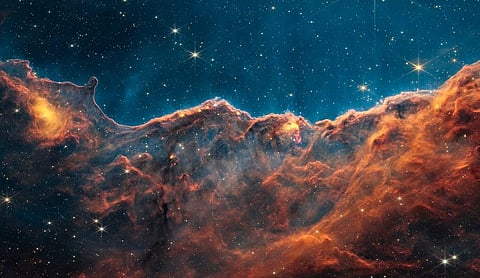

The United States National Aeronautics and Space Administration (NASA) James Webb Space Telescope (JWST) was launched in 2021. Since then, it has captured several groundbreaking images, widening our knowledge base about the space.
Here’s a recap of five times JWST stunned us with its observations in 2022.
NASA July 11, 2022 released an image of a galaxy cluster taken by JWST as it appeared 4.6 billion years ago. The image, unveiled by US President Joe Biden, is the “deepest and sharpest infrared image” of some of the farthest and oldest galaxies that have been observed.
The space agency is closer to unfolding more Mars secrets with the help of JSWT. The telescope captured its first images and infrared spectrum of the red planet September 5, 2022. The spectrum has water, carbon dioxide and carbon monoxide signatures in the planet’s atmosphere.
The telescope has also provided a long-awaited glimpse of Neptune and revealed more information about its enigmatic storms. The clarity of the planet’s rings since 1989 stands out most in Webb’s latest photograph.
JWST released new images September 12, 2022, showing the interior of the Orion Nebula, a star-forming region located 1,350 years away from the Earth. The images show us how stars are formed and are similar to how the solar system looked 4.5 billion years ago.
Scientists also found clear evidence of carbon dioxide in a faraway world for the first time with its help. A Jupiter-like exoplanet where the gas was found orbits a star 700 light years away.
Read more: